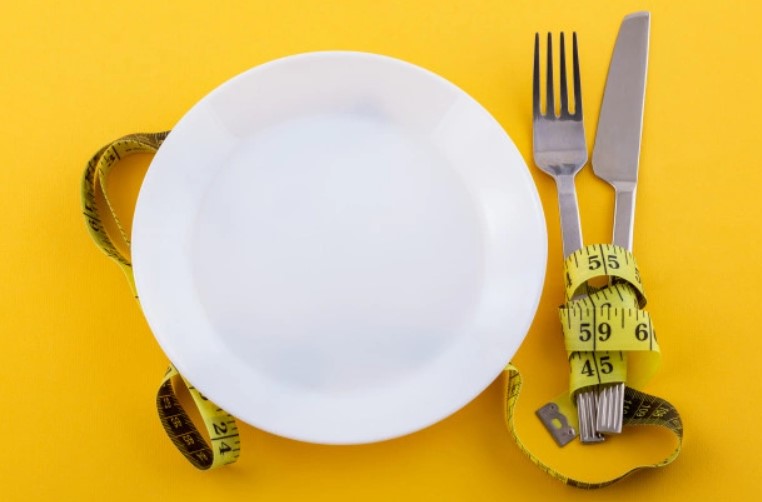A well-balanced diet means eating the right quantity and quality of food. It denotes healthy eating as a standard given that it includes a variety of nutritious food such as fresh fruits, vegetables, whole grains, legumes, nuts, and lean proteins. Moreover, food patterns depend on the specific eating diet of a person and various patterns exit for those following a Mediterranean or Vegetarian diet. It should also be assumed that these food group recommendations come in nutrient-dense forms. Hence, calories acquired from added sugars, refined starches, solid fats, alcohol should be limited.
In order to accomplish this, knowing how to portion food effectively is the key. It starts by knowing what each person’s “macro-nutrients” needs each day are. We call macro-nutrients carbohydrates, protein and lipids (fat). They are the nutritive elements of our food that our body uses for energy and to maintain the structure and function of our organs. Depending on individual goals, age, and health conditions it is possible to calculate the quantity of each macro nutrient that a person will need daily. Tables now exist with very user-friendly on-line programs that can help choose the right food to reach the daily macro-nutrients goals. Once this is assessed portioning allows an individual to measure how much food they need throughout the day. Through this, they will be able to develop a habit of eating the right amount of food without having to sacrifice a food group.
However, this should not be confused with the serving of food. National Heart, Lung, and Blood Institute (2013) clarified that “A portion is the amount of food that you choose to eat for a meal or snack. It can be big or small, you decide. A serving is a measured amount of food or drink, such as one slice of bread or one cup (eight ounces) of milk.” Portion size allows one to decide the amount of food they eat while serving size enables one to follow a standardized or recommended amount of food. Following a diet based on portions may most likely lead to a long-term habit as compared to a diet based on serving since not everyone has the time nor patience to measure their food serving in detail. On the other hand, both may still result in a well-balanced diet as long as food quality is the priority.
Portions and Plating
For people who do not want to use tables to calculate their macro- nutrients needs nor follow on a daily basis how they can measure their food intake during the day, an easy way to build a healthy and balanced diet can be done through portions size based on plating. This may lean more towards eating based on the serving size such that there is a recommended amount of food per category. According to The Nutrition Source, for the general population to maintain a stable weight a plate should contain ½ vegetables and fruits, ¼ whole grains, and ¼ protein; healthy plant oils should be consumed in moderation. This can be different when we are talking of losing weight.
It is also important to take note of the quality of the food rather than its quantity. For instance, certain types of protein may be healthier than others–fish is considered a better choice of protein compared to red meat if we need to reduce saturated fat; therefore, having more fish will benefit patients with cardiovascular risk. The cooking method should also be taken into account, being aware of healthier ways of cooking will definitely assist an individual in maintaining a healthy diet, i.e., baking rather than frying.
Portions and Food Timing
Eating smaller portions of food throughout the day instead of big meals can also be done. This will more likely enable an individual to have more freedom when it comes to eating since it is not based on specific measures. Nutrient-dense food is the key to eating smaller portions–food rich in fiber helps too as it “may slow down the emptying of the stomach and increase digestion time” as stated in Healthline. Eating in this manner will also keep the individual feeling full throughout the day as they control when and how they eat. Pflugradt (2019) identified the health benefits of eating smaller portions with improved blood sugar, satiety and weight, and digestion. She also added that it may even have financial benefits especially in terms of dining out.
Eating smaller portions promotes intuitive eating. When people listen to their bodies and act in accordance with it, they will have a better habit of eating only when it is necessary. They will have more awareness of their hunger level instead of simply eating just to satisfy their cravings.
Most of the time, people eat because they are bored or simply dehydrated–in this case, junk food is usually the go-to. Ruback explained “It has been found that specific foods contribute to an increase in dopamine levels. These foods are generally categorized as “junk food”—those high in sugar, fat and sodium content. Foods like this cause the body to release endorphins aka “feel good” hormones.” The issue is that the impression of feeling better with these kinds of food does not last.
What most people do not know if that eating small amount of good protein throughout the day will give the same support on their dopamine level and the same impression of “feeling good” with the added benefit that this will last much longer than with junk food.
Dominique Fradin-Read’s practice, VitaLife-MD, offers weight loss programs based upon the Mediterranean diet, one of the best ranked diet for health and longevity; the notion of portion size is addressed in various ways, either through accurate measurement of each patient’s macro-nutrients needs or with the easier approach of plating described above. Each patient’s needs will then be answered adequately.


